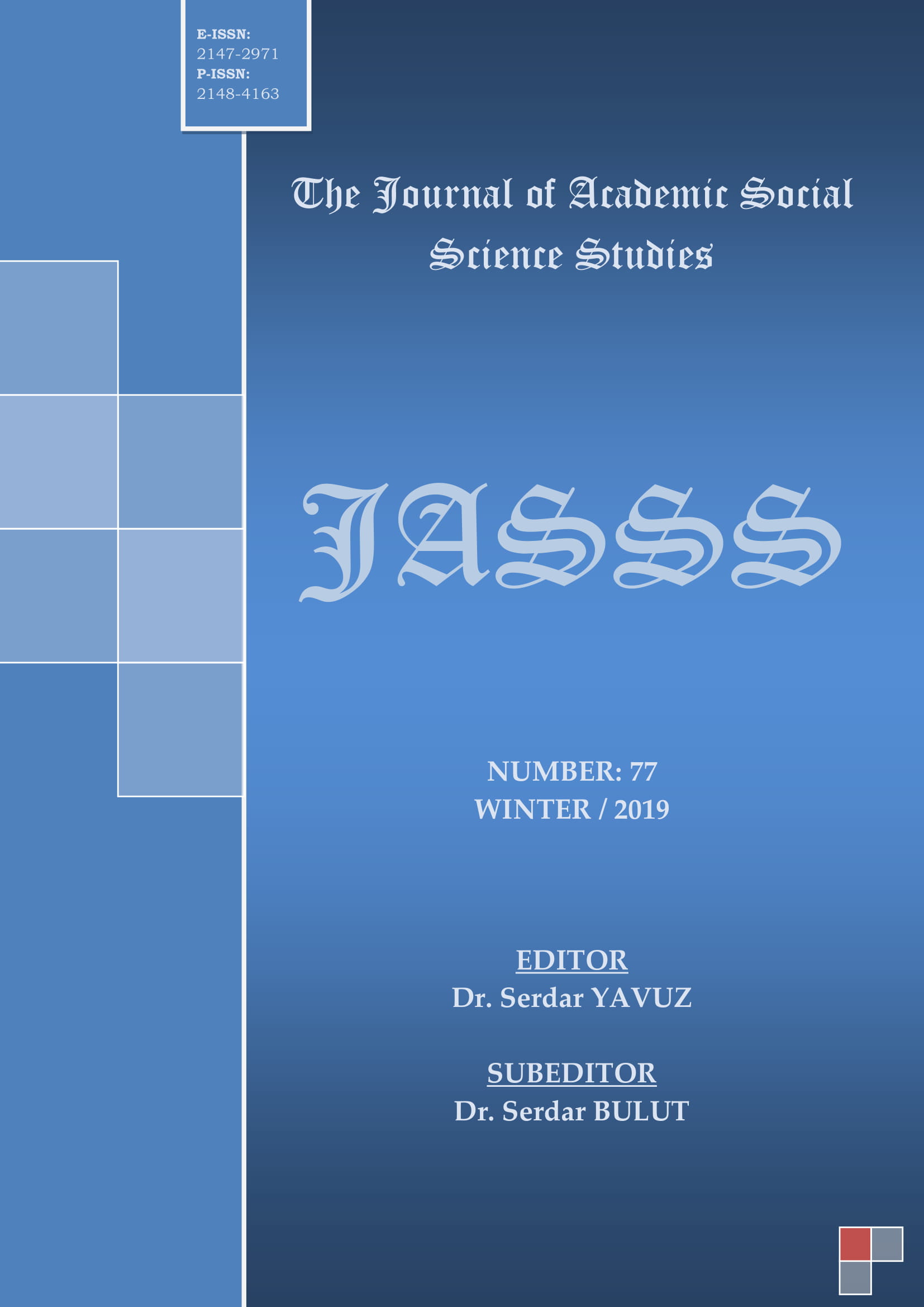PİYANODA STACCATO TEKNİĞİNİN ÖĞRETİLMESİNDE ANLAMLANDIRMA STRATEJİLERİNE YÖNELİK UYGULAMALARIN ETKİSİ
Author :
Abstract
Çalışmada piyano eğitimi sürecinde öğrencilere öğretilen önemli bir teknik beceri olan staccato (kesik çalma) tekniği ele alınmıştır. Bu kapsamda tekniğin anlamlandırmaya dayalı farklı benzetimlerle öğretilmesi ile ilgili uygulamalar yapılmıştır. Uygulamaları gerçekleştirmek için biri kontrol grubu olmak üzere 4 grup oluşturulmuştur. Kontrol grubu ile klasik çalışılırken, deney gruplarının her biri ile farklı benzetimler yardımıyla anlamlandırma stratejilerinin uygulanması sağlanmıştır. Uygulamalar her bir öğrenci ile 40 dakikalık ders saatinde bireysel yapılmıştır. Deneysel uygulamalarda staccato tekniği ilk grup ile ağaçkakan benzetimi, ikinci grup ile pinpon topu benzetimi, üçüncü grup ile iğne batması benzetimi ile çalışılmıştır. Çalışma için araştırmacılar tarafından konuya ve tekniğe uygun olan bir piyano eseri yazılmış ve uygulamalarda kullanılmıştır. Her biri 5’er kişiden oluşan deney ve kontrol grupları ile yapılan çalışmalar, Kurtuldu (2010) tarafından geliştirilen puanlama anahtarı ile değerlendirilmiştir. Gruplardan elde edilen sayısal veriler istatistiksel olarak işleme tabi tutulmuş ve karşılaştırmalı ölçümler yardımıyla sonuçlar analiz edilmiştir. Karşılaştırmalı ölçümlerde doğru yönü tespit etmek için normallik varsayımı sınaması yapılmıştır. Bu uygulamada çarpıklık ve basıklık katsayıları incelenmiştir. Sonuçların normal dağılım varsayımını karşılamaması sebebiyle parametrik olmayan ölçümler tercih edilmiştir. Analizlerden elde edilen sonuçlara göre deney grupları kontrol grubuna göre farklılık göstermiştir. Deney grupları içerisinde ise ikinci deney grubunun (pinpon topu benzetimi) staccato tekniğini uygulamada daha başarılı olduğu gözlenmiştir.
Keywords
Abstract
In this study, staccato technique which is an important technical skill and taught to students during piano education process is discussed. In this context, practices related to teaching the technique with different simulations based on elaboration were made. In order to perform the applications, 4 groups were formed, which one is a control group. While classical study was conducted with the control group, it was ensured that elaboration strategies were applied with the help of different simulations with each of the experimental groups. Applications were made individually with each student during 40 minutes. In experimental applications, staccato technique was studied with first group woodpecker simulation, second group with ping-pong ball simulation, and third group with needle prick simulation. For the study, a piano piece which was suitable for the subject and technique was written by the researchers and used in the practices. Studies conducted with experimental and control groups, each consisting of 5 individuals, were evaluated with the scoring key developed by Kurtuldu (2010). The numerical data obtained from the groups were statistically processed and the results were analyzed with the help of comparative measurements. Normality hypothesis testing was used to determine the correct direction in comparative measurements. In this application, skewness and kurtosis coefficients were examined. Non-parametric measurements were preferred because the results did not meet the normal distribution assumption. According to the results obtained from the analysis, the experimental groups differed from the control group. It was observed that the second experimental group (ping-pong ball simulation) was more successful in applying the staccato technique among the experimental groups.
Keywords
- Açıkgöz, K. Ü. (2004). Aktif Öğrenme. İzmir: Eğitim Dünyası Yayınları.
- Arslan, G. (2015). Ergenlerde Psikolojik Sağlamlık: Bireysel Koruyucu Faktörlerin Rolü. Türk Psikolojik Danışma ve Rehberlik Dergisi, 5(44), 73–82.
- Baştürk, R. (2014). Deneme Modelleri. A. Tanrıöğen (Ed.), (Bilimsel Araştırma Yöntemleri). Ankara: Anı Yayıncılık.
- Can, A. (2017). SPSS ile Bilimsel Araştırma Sürecinde Veri Analizi. Ankara: Pegem Akademi.
- Çokluk, Ö., Şekercioğlu, G. ve Büyüköztürk, Ş. (2014). Sosyal Bilimler Için Çok Değişkenli Istatistik SPSS ve LISREL Uygulamaları. Ankara: Pegem Akademi.
- Ekiz, D. (2017). Bilimsel Araştırma Yöntemleri. Ankara: Anı Yayıncılık.
- Hamurcu, H. (2002). Okulöncesi Öğretmen Adaylarının Kullandıkları Öğrenme Stratejileri. Hacettepe Üniversitesi Eğitim Fakültesi Dergisi, 23, 127-134.
- Karakuş, Ö. ve Başıbüyük, O. (2017). Deneysel ve Deneysel Olmayan Araştırma Yöntemleri. K. Böke (Ed.), Sosyal Bilimlerde Araştırma Yöntemleri Içinde. S. 198-240, İstanbul: Alfa Yayınları.
- Kurtuldu, M. K. (2010). Piyano Sınavı Değerlendirme Ölçeğinin Puanlayıcılara Yönelik Geçerlik ve Güvenirliği. Elektronik Sosyal Bilimler Dergisi (Esosder), http://www.esosder.com/ (ISSN: 1304 – 0278), 9(31), 224 – 232.
- Kuzu, S., Balaban, F. ve Canpolat, M. (2014). Eğitim Fakültesi Öğrencilerinin Öğrenme Stratejilerinin Belirlenerek Bölümlere Göre Karşılaştırılması. Journal of Research in Education and Teaching, 3(2), 257-264.
- Özer, B. (2002). İlköğretim ve Ortaöğretim Okullarının Eğitim Programlarında Öğrenme Stratejileri. Eğitim Bilimleri ve Uygulama, 1(1), 17-32.
- Öztürk, B. ve Kısaç, İ. (2003). Bilgiyi Işleme Modeli. B. Yeşilyaprak (Ed.), (Gelişim ve Öğrenme Psikolojisi). Ankara: PegemA Yayıncılık.
- Pirgon, Y. (2018). Carl Philip Emanuel Bach’ın Solfeggıo Adlı Eserinin Öğrenme Stratejileri Açısından Değerlendirilmesi. Sanat Eğitimi Dergisi (SED), 6(1). 37-54.
- Senemoğlu, N. (2005). Gelişim Öğrenme ve Öğretim Kuramdan Uygulamaya. Ankara: Gazi Kitapevi.
- Subaşı, G. (2003). Bilgiyi İşleme Kuramı. A. Ulusoy (Ed.), (Gelişim ve öğrenme). Ankara: Anı Yayıncılık.
- Şahin, H. ve Uyar, M. (2013). Öğrenme Stratejileri Kullanımının Akademik Başarıya Yansımaları. Abant İzzet Baysal Üniversitesi Eğitim Fakültesi Dergisi, 13(1), 164-177.
- Tay, B. (2004). Sosyal Bilgiler Dersinde Anlamlandırma Stratejilerinin Yeri ve Önemi. Gazi Üniversitesi Kırşehir Eğitim Fakültesi Dergisi, 5(2), 1-12.
- Tay, B. ve Yangın, B. (2008). 4. Sınıf Öğrencilerinin Sosyal Bilgiler Dersinde Sınıf Ortamında Kullandıkları Öğrenme Stratejileri. Ahi Evran Üniversitesi Kırşehir Eğitim Fakültesi Dergisi (KEFAD), 9(3),73-88.
- Tunçer, B. K. ve Güven, B. (2017). Öğrenme Stratejileri Kullanımının Öğrencilerin Akademik Başarıları, Hatırda Tutma Düzeyleri ve Derse Ilişkin Tutumları Üzerindeki Etkisi. Yüzüncü Yıl Üniversitesi, Eğitim Fakültesi Dergisi, 4(2), 1-20
- Vural, L. (2011). Öğretmen Adaylarının Çalışmalarında Yaşadıkları Öğrenme Sorunları ve Kullandıkları Öğrenme Stratejileri. Dicle Üniversitesi Ziya Gökalp Eğitim Fakültesi Dergisi, 46 16, 46-65.
- Vural, L. (2013). Grasha-Riechmann Öğrenme Stili Ölçeğinin Yapı Geçerliği Çalışmaları. Eğitimde Kuram ve Uygulama, 9(4), 481–496.
- Yıldız, M. A. ve Çevik, G. B. (2016). Evli Bireylerin Evlilik Doyumlarının ve Yaşam Doyumlarının Incelenmesi. Uluslararası İnsan Bilimleri Dergisi, 13(1), 227–242.
- Yıldızlar, M. (2012). Öğretmen adaylarının öğrenme stratejileri üzerine bir çalışma. Hacettepe Üniversitesi Eğitim Fakültesi Dergisi, 42, 430-440.
